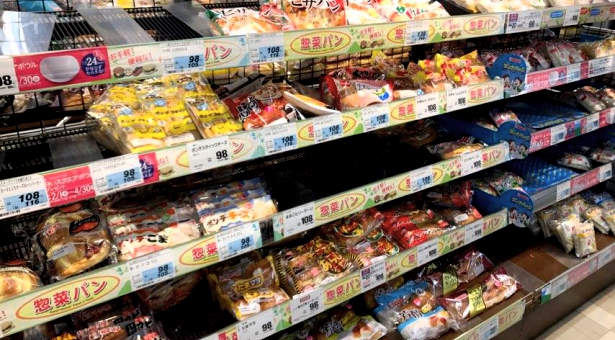Written and Media by Momoka Murata.

Photo by Momoka M
What is your favorite breakfast? Toast? Cereal? Oatmeal? In Japanese culture, traditional breakfast used to consist of rice, fish, and miso soup. However, after westernization, bread became more common. The origin of bread in Japan arrived along with guns on a Portuguese ship. Six years later, Christian missionaries started to make their own bread. However, it was not that long after that Christianity was banned. Therefore, bread was only produced for western people in the small area where they were allowed to live.
The production of bread by the Japanese was triggered by the Opium War in China in 1840. The government feared that westerners would also invade Japan after China, so they prepared bread as army provisions because, in order to cook rice, smoke could be the target for the enemy. Fortunately, the bread was not used as emergency food.

Photo by Momoka M
This was the beginning of Japanese bread history. In 1869, the oldest “Kimuraya general head office” in existing bakery opened in Ginza in Tokyo. Five years later, Japan’s unique “Anpan” (which is a kind of red bean paste inside of a bread) was released and became a popular item. After the Second World War, the eccentricity of eating habits advanced, and bread settled as a staple food along with rice.
In recent years, one thing that surprises foreigners when they come to Japan is the “deliciousness of the bread.” When they are going to a bakery, a wide variety of bread is lined up; there are more types of sweet buns and bread than foreigners are typically accustomed to.
This article will introduce some famous bread in Japan and how they were invented.
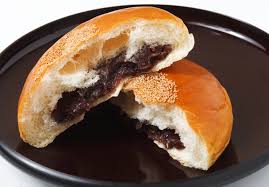
Photo from http://www.japan-bread.jp/
Anko (bean paste) is unfamiliar to the United States. It is the paste made from azuki beans, stewed until they are softened. Then sugar is added and ground until it becomes pasty. This is then put in the bread dough.
The founder of “Kimuraya general head office” devised and released Anpan in 1874. Anpan was well received and presented to Meiji Emperor in 1875.
⇒ “Kimuraya general head office”
- Jam Pan
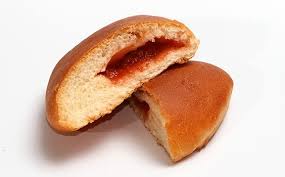
Photo from http://www.bread.jp.net/
Although it is common to apply jam to toast, in the case of Jam Pan, jam is poured into the bun.
In addition to jam, whipped cream, custard, cream cheese, and many other ingredients are included. One of the most popular products, “Jam Pan” is also said to have been developed by “Kimuraya General Head Office.”
- Cream Pan
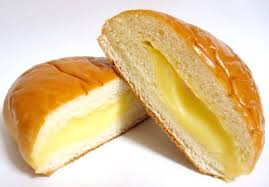
From Yahoo.co.jp search
Another sweet bread in Japan has custard cream poured into bread, and it is one of the oldest and most common.
According to the history of “Shinjuku Nakamuraya”, the founder and his wife of the company “Cream Pan” found cream puffs extremely delicious and thought that it would be possible to make bread using this cream. The first cream bread was released in 1904.
⇒ Description page of “Shinjuku Nakamuraya” “Cream bread”
- Melon Pan
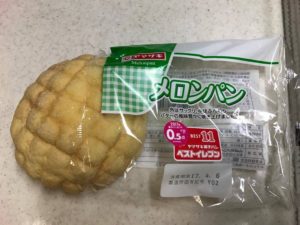
Photo by Momoka M
A classic sweet bread which is baked with cookie dough on the bread. Depending on the area of Japan where the bread is made, there may be white bean paste in it.
In 1910 an Armenian baker by the name of Iwan Sagoyan invented Melon Pan based on French baked confectionery “galette” in Japan.
Because Iwan Sagoyan was a former Romanov family cook, he was familiar with the manufacturing methods of both French and Viennese style bread (German bread). Melon bread is said to have originated from Russian tradition. It combines such various techniques from different countries. However, it was invented in Japan. Although there is disagreement as to why it is called “Melon” bread, it is suggested that the crack of the biscuit was similar to a melon.
Sweet seasoned bread is in all over the world, but I think that there are not many countries as rich in variations as Japan. If you visit Japan sometime, it would please me if you recall this article and pick up any pastry buns.
Source
http://www.panstory.jp/history/history.html
https://gakumado.mynavi.jp/gmd/articles/29525
[divide]
The video below introduces a simple recipe that will give you an idea of how Melon Pan is made, although it is slightly different from Melon Pan baked with cookies on the actual bread.
[divide]

























